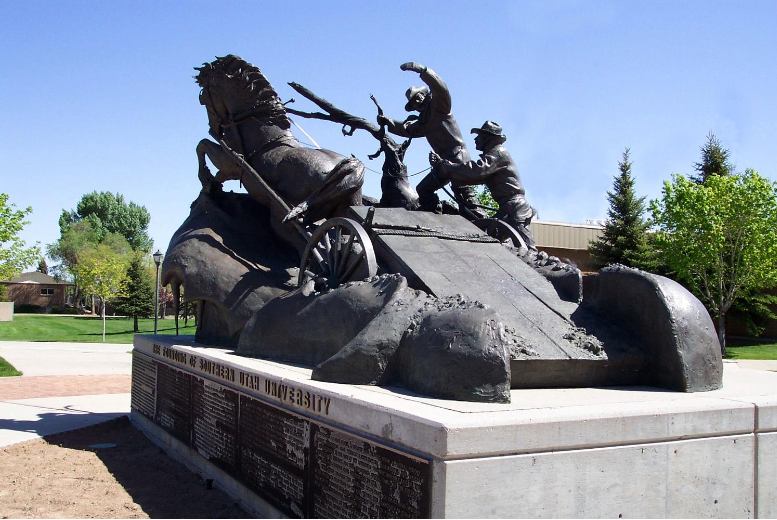This blog was written by Kyler, a UHS Ambassador who has been working closely with the Women’s History Initiative.
In our task of auditing the Utah Monuments and Markers Database, we are presented with opportunities to interpret commemoration and cultural memory in unique ways. Though monuments are far from the only source of historical remembrance in the modern world, they have the profound ability to represent how public history and collective memory develop over time. They mark who and what was perceived to be important, connecting the past with the development of the present. However, unlike their intended format of interpretation, our digital access to Utah’s cultural memory can frame our interpretation in ways that separate the markers from their materiality.
Instead of encountering historical markers in place-specific contexts, our work has exposed us to a fascinating archive of memory that offers an unparalleled glimpse into the historical memories Utahns have worked to commemorate. With such a privilege, I believe that our work can produce insightful and critical interpretations of the stories Utah’s historical markers tell.
A key consideration of our work is understanding that markers and monuments are representations of the memory of history, not objective portrayals of the past that inherently indicate significance.
Scholars of public memory argue that memory practices are a significant means by which narratives of citizenship and collective identity are constructed. In a place-based setting such as a monument, cultural memory is tied to specific geography and preserves the continuity with historical heritage through the present day.

Public commemorations of cultural memory through monuments and markers can take on a different meaning when accessed digitally. Just as the historian would access an archive as a resource for interpreting the past, the database can be seen as an archive of cultural memory. In its digital form, the database challenges linear comprehension of the past and traditional representations of historical narrative. It displays broader trends in collective memory and reveals insights into community development in Utah in ways that traditional historical thinking can’t. As a digital archive separates the monuments and markers from their physical location, we are able to assess the memory landscape from an analytical and creative distance.
Our unique positionality in our research presents an opportunity to conceptualize the historical development of cultural identities and memory in new ways while being critical of the stories told in abundance, the harm they produce, or the peoples and themes they leave out.
For instance, in our first review of the database, we found that narratives exploration/settlement and frontier conflict have received a significant amount of attention, representing 20 percent and 4 percent of monuments listed. Given the time period in which the events memorialized would have taken place roughly between 1850 to 1896, this indicates this time period’s significance in the development of Utah cultural memory. These figures challenge us to consider if these themes still proportionally remember the development of the state and question what other aspects of history were forgotten.

The potential of our work has yet to be realized as we’ve only just begun, but one thing is clear even at such an early stage. From a macro perspective, we can see the richness of cultural heritage just as well as we can see the gaps and flaws in how the past is memorialized. As we continue, we will compile data to help us analyze how Utah’s historic cultural memory relates to the present as we consider the demographic, thematic, and temporal aspects of Utah’s monument landscape. While doing so, we strive to create an updated archive of memory capable of inspiring others to consider the significance of memory and perspective in historical thinking.
(1) Ekaterina V. Haskins. Popular Memories: Commemoration, Participatory Culture, and Democratic Citizenship. (Columbia: University of South Carolina Press, 2015), 4.
(2) Patrick H. Hutton, The Memory Phenomenon in Contemporary Historical Writing (New York: Palgrave Macmillan, 2016), 80-82.

